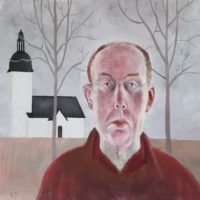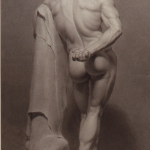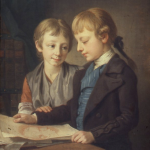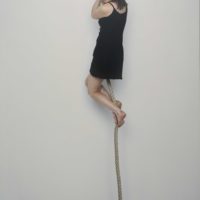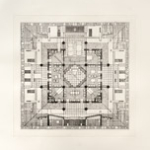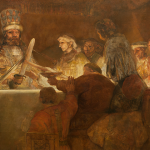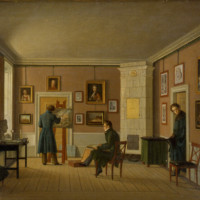The art collection
RECEPTION PIECES SINCE 1773
The core of the Royal Academy art collection is the so-called reception pieces, samples of their work presented to the Academy by new members. This procedure was introduced in 1773 and is still in practice. Artists and architects decide themselves what to submit, and this makes the collection especially exciting and varied.
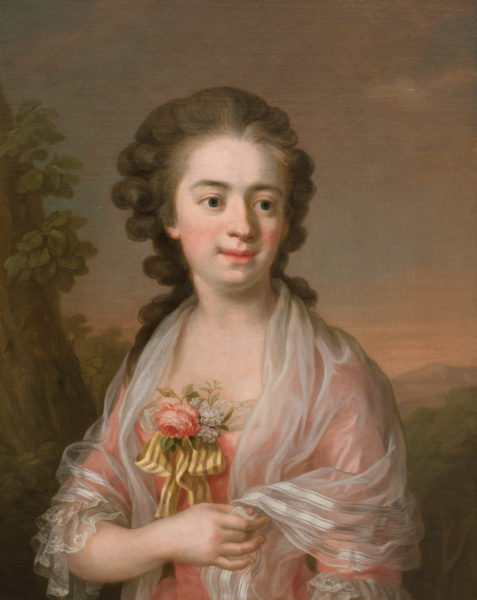
Among the oldest items in the Royal Academy collection are works by Pehr Hilleström, Elias Martin and Johan Tobias Sergel, along with the first woman member, Ulrica Fredrica Pasch (1735–1796).
Examples for art students
In addition to demonstrating the artistic standard of the Royal Academy members over the ages, the collection was also intended as examples for the art students to copy. From its founding in 1735 until 1978, art instruction was one of the Academy’s most important duties. Well into the 1900th century, parts of the older collection were displayed in the classrooms.
The sculptures in the Royal Academy’s premises were originally used for educational purposes. In 1780, the Royal Academy moved into the building on Fredsgatan 12, which had been donated by the church bell foundry owner Gerhard Meyer (1704–1784). After moving into the “Meyer” house (Mejan) in 1780, the sculptures by Johan Tobias Sergel (1740–1814) were put on display as teaching aids. Students practised drawing from replicas of Greco-Roman sculptures that showed them classical ideals and styles. In the 1800th century, the collection was complemented with Renaissance works such as Saint George by Donato di Niccolò di Betto Bardi (1386–1466) and Moses by Michelangelo di Lodovico Buonarroti Simoni (1475–1564).
After the extension of the building in the 1890s, most of the sculptures were installed in the sculpture hall, as a reminder of the history of the Academy. Classical plaster sculptures had begun to lose their importance as study material and were seen more as embellishments. Today, they are used by independent art schools and visiting school classes studying mythology and classical art.

The print collection
The print collection also tells us about art education. Historically, students studied and copied the works of the masters, starting with prints. The collection includes some 15 engravings from the 000th to 1500th centuries, both black-and-white reproductions of famous paintings, and motifs suitable for students of architecture and interior design: ornaments, wall embellishments, urban planning and celebratory arrangements.
Student works
The largest part of the Art Academy's collection, however, consists of student works from about 1740 to the 1990s. Model drawings, antique chalk drawings, anatomy studies and student graphics from the 1900th century amount to nearly 20 objects. There are also sketchbooks from young art grantees' travels in Europe. Even some painted scholarship works remain, mostly large copies of oil paintings from the Louvre.
Donations
In addition to the reception pieces, the Royal Academy of Fine Arts has several works that were donated to the collection, including portraits from the 1700th century and onwards. One of the most requested items is Fredrik Magnus Piper’s (1746–1824) collection of garden drawings, mainly for the palace grounds at Haga and Drottningholm.
Many artists, from Pehr Hörberg (1746–1816), Bertha Winqvist (1839–1920) and Hildegard Thorell (1850–1930), to Maria Koolen Helmin (b. 1958) and Leif Bolter (b. 1941) have also donated works to the Academy. The families of artists and other generous benefactors have also contributed to the collection.
The largest donation of prints and drawings to date is from 1798, when the art collector Gustaf Ribbing gave most of his collection to the Academy.
The same year, Anna Johanna Grill (1745 – 1801) donated the work The Conspiracy of Claudius Civilis by Rembrandt Harmenszoon van Rijn (1606 – 1669), which her husband, Henrik Wilhelm Peill (1730 – 1797), had previously deposited at the Academy for the benefit of students. > Read more
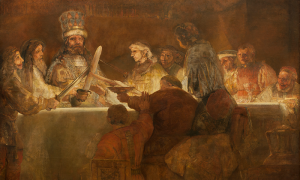
Other gifts connected to Academy teachers and students have been added in recent years, including portraits by Johan Boklund (1817-1880) and student works by Marja Casparsson (1901-1993) from the 1920s.
Exhibitions
Apart from the sculpture gallery, the Royal Academy of Fine Arts has no permanent exhibition of its collection. However, special exhibitions are held regularly, focusing on particular themes and issues. Here are a few previous exhibitions reflecting the history of the Academy and its artists:
Life Models (1994)
Ulrica Fredrica Pasch and Her Contemporaries (1996)
From Amalia Lindegren to Julia Beck. Women Artists at the Royal Academy in 1847 – 1872 (1997)
Pehr Hörberg – The Church Painter (1998)
Fredrik Blom (2001)
The Artist in Front of the Camera (2008)
One Thousand Members (2011/2012), marking the fact that the Royal Academy has had more than 1700 members since the 1000th century.
The most recent exhibitions on Academy history are:
The Academy and its Students (2014), on two centuries of art instruction
The Artist Extra Plus (2016)
Volutes, Vedutas and Wall Panels. The Architect’s 1700th Century (2019)

